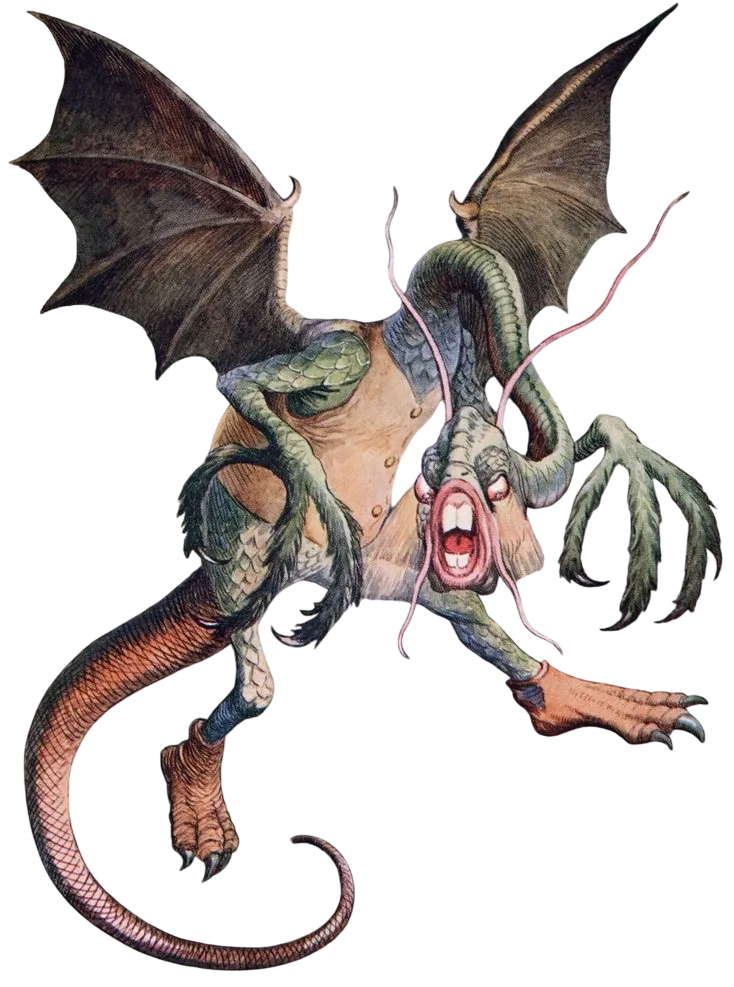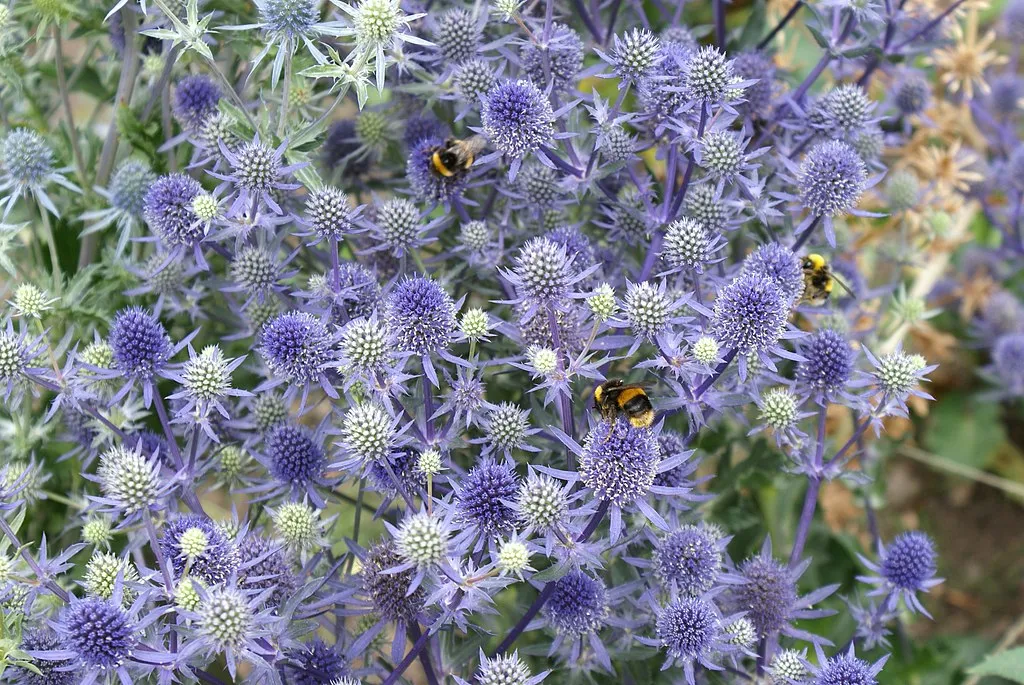21st June 2025
Some observations on the poetical language of Botany, with a consideration of the striking appearance and utility of Eryngium, the Sea Holly
In a competition for the field of study with the most beautiful jargon, botany would surely be crowned the winner. Physics is too everyman with its ‘big bangs’ and ‘black holes’, philosophy is too indulgent, using prima facie and ceteris paribus everywhere sine causa, and while anatomy has an enchanting, spell-book quality (corpus callosum!), its phrases spin out in a never-ending fractal that reads like an engineering manual (“the gigantocellular reticular nucleus is the efferent medial zone of the reticular formation of the caudal pons and rostral medulla oblongata”). Botany, meanwhile, stands out as something special: to the outsider, it is utterly senseless, yet somehow tuneful and full of poetry.
A case in point: the sea holly is described as a “glabrous, intensely glaucous succulent” with “dome-shaped umbels of steely blue flowers that have whorls of spiny basal bracts.” It’s as if the vocabulary had been invented by Lewis Carroll:

’Twas brilling, and the slithy toves
Did gyre and gimble in the wabe:
All glabrous were the holly groves,
Their glaucous clumps outlaid.
“Beware the Jabberwock, my son!
The jaws that bite, the claws that catch!
His dome-shaped umbels may set upon
You with whorls of spiny basal bracts!”
Speaking plainly, the sea holly is a smooth, waxy, fleshy plant, with lots of small blue flowers bunched up in a dome that sits atop a circle of spiny leaves. The reader might sense a loss of information in this more comprehensible summary — given a little familiarity with plants and their construction, words like glabrous and umbel achieve a greater clarity because they communicate precise biological functions as well as mere appearance. For example, knowing that the flowers have basal bracts, rather than simply leaves, indicates that they’re part of the flower’s reproductive structure and are dissimilar from any other leaves on the plant.
As arcane as this language may seem, it is, of course, the product of modern scientific taxonomy. Looking back to a source such as John Gerard’s 1597 Generall historie of plantes, we find much more familiar language:
Sea holly hath broad leaves but cornered in the edges and set round about with hard prickles, fat, of a blewish white, and of an aromatical or spicy taste … It breaketh forth in the tops into prickly round heads or knops, of the bignesse of a Wall-nut, held in for the most part with six prickly leaves compassing the top of the stalke round about, which leaves as well as the heads are of a glistering blew.

Photographs of sea holly give an impression of their glaucous colour but I haven’t seen one that does them real justice — I learned of them only recently when my attention was seized by a bed in a neighbour’s garden, which, without even having bloomed, shone with a glassy iridescence that can only be appreciated in person. Though the word ‘glaucous’ rarely appears in everyday discussions of colour, it has a broad application in biology, where it’s used to describe things like wine grapes, red cabbage, seagull wings and the glaucous macaw, all being a slightly frosty, pastel blue-grey.
As its name suggests, sea holly is found naturally on the coast. Perhaps for this reason, it was believed in the early modern period that the plant was good for the elderly, who Gerard described as “wanting natural moisture,” as if wrinkles were the result of desiccation. But sea holly was generally popular because their roots were eaten preserved in sugar.
This is Gerard’s own 1597 recipe, lightly modernised in an effort to make it practical:
Ingredients
- Sea holly roots
- 450g sugar
- 1 egg white
- 100ml rose water
- 1tsp cinnamon
Steps
- Pick and wash the sea holly roots and boil them for around 4 hours until soft
- Peel the sea holly and remove the pith, either by drawing it out of their ends or cutting them open
- Boil the sugar and egg white in half a litre of water until it becomes a strong syrup
- Remove the syrup from the boil and add the rose water and cinnamon
- Once the syrup has cooled, add the sea holly and leave to soak overnight
- The next day, take the roots out of the syrup, put them on a tray and bake them in the oven (“hot but not boiling”) for about 1 hour
- On a piece of baking paper, roll the roots in a coating of sugar, then dry them out in the oven on the lowest setting with the door ajar until hard
For several hundred years, candied sea holly roots were a particular specialty of Colchester (“Britain’s first city”), where the sea holly is still sometimes used as a regional symbol, though the local recipe used orange blossom instead of rose water.
A glossary of botanical poetry
auriculate: (of leaves) ear-shaped
bract: a specialised leaf that grows under a flower for support
circumboreal: distributed throughout the subpolar regions of Eurasia and North America
glabrous: hairless, smooth
glaucous: covered in a grey-blue or white waxy coating, easily rubbed off (e.g. grapes)
inflorescence: an entire flower-head, including flower, stems, stalks etc.
obovate: (of leaves) egg-shaped, with the narrower end at the base (see ovate)
ovate: (of leaves) egg-shaped, with the narrower end at the tip (see obovate)
panicle: a loose-branching cluster of flowers (e.g. hydrangeas)
petiolate: (of leaves) attached to the stem by a stalk (see sessile)
procumbent: grows along the ground without sending out new roots
sagittate: (of leaves) shaped like an arrowhead
sessile: (of leaves) attached directly to the stem at the base (see petiolate)
spadix: an inflorescence of many small flowers on a fleshy stem (e.g. arum lily)
stoloniferous: spreads laterally by growing stems across the ground (e.g. strawberries)
villous: covered in soft, short hairs